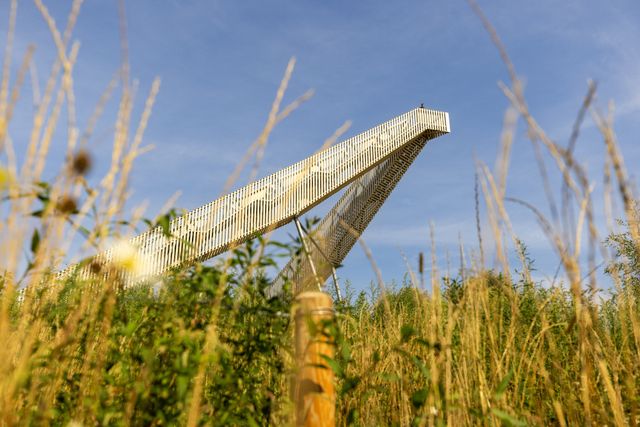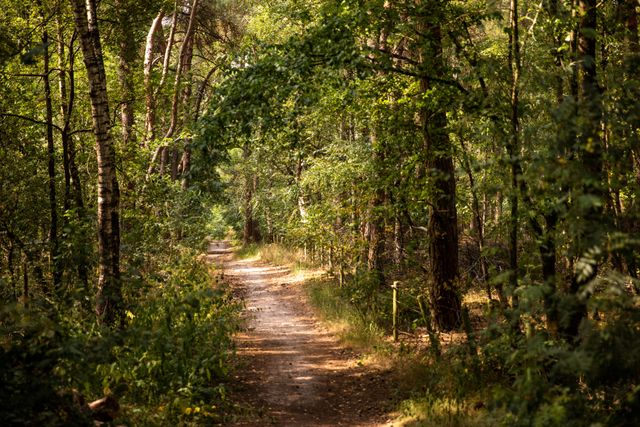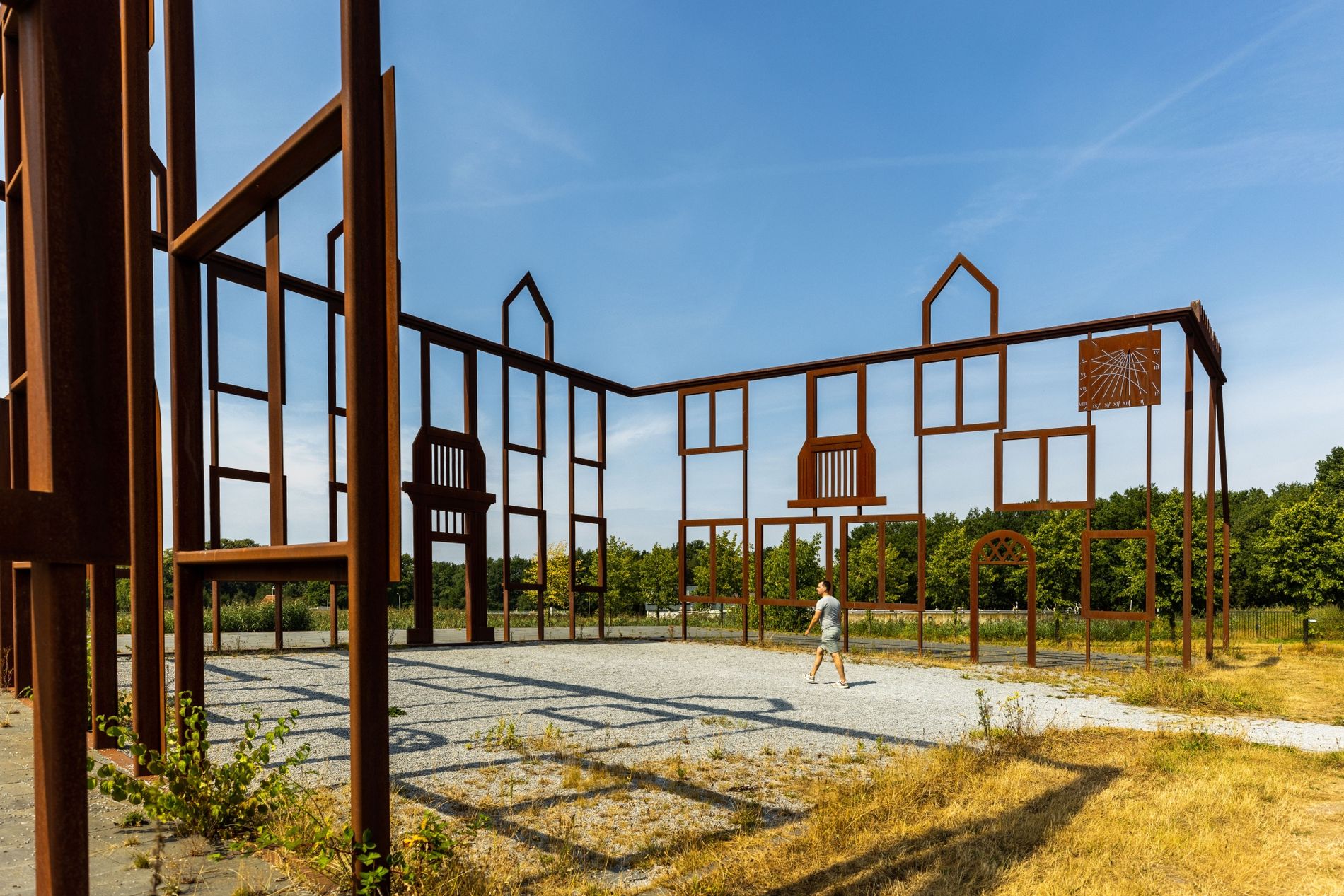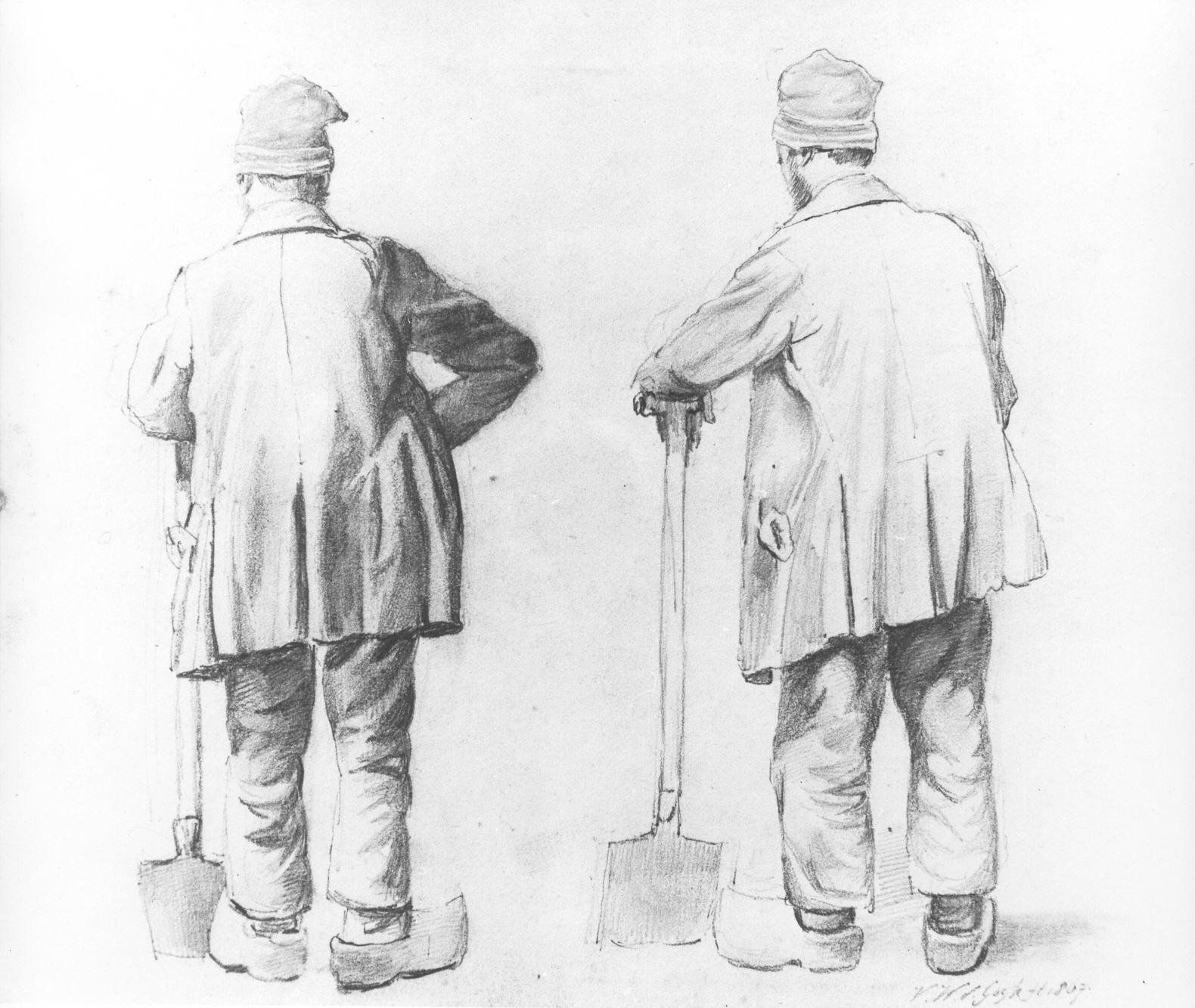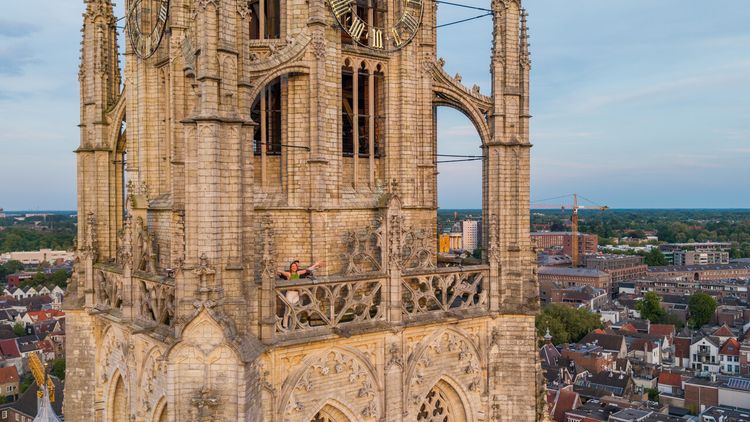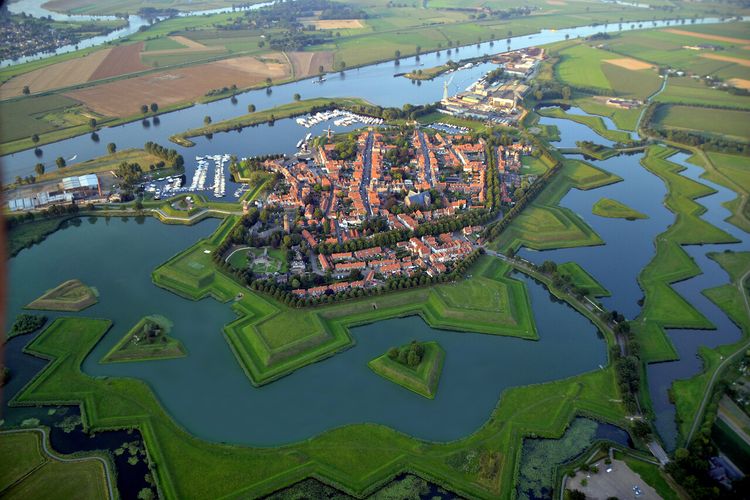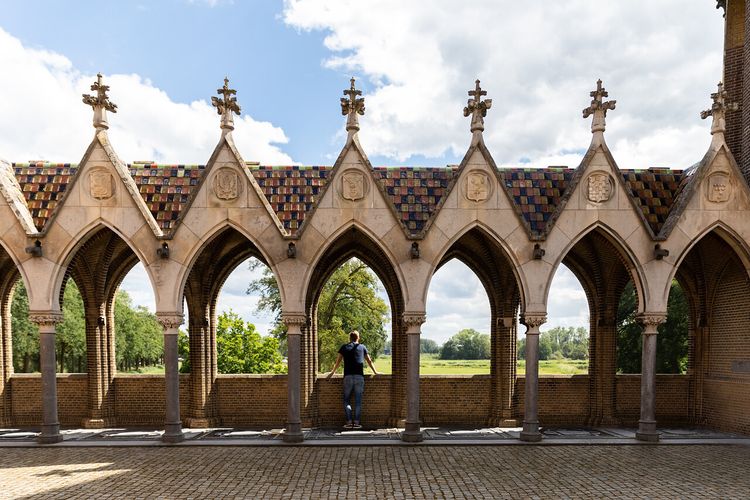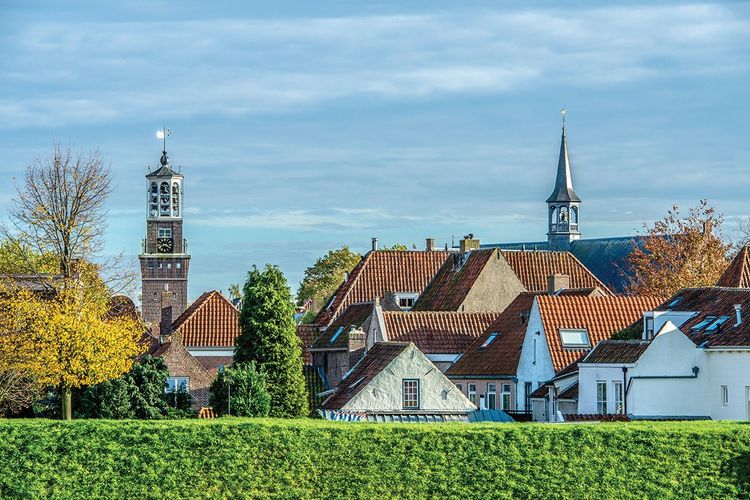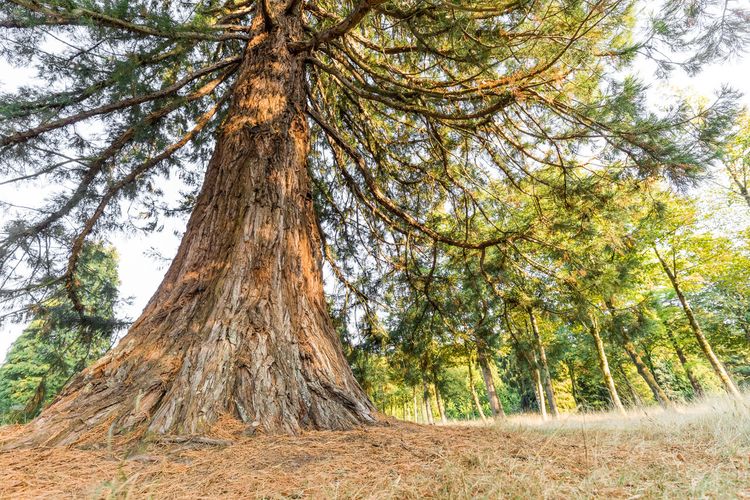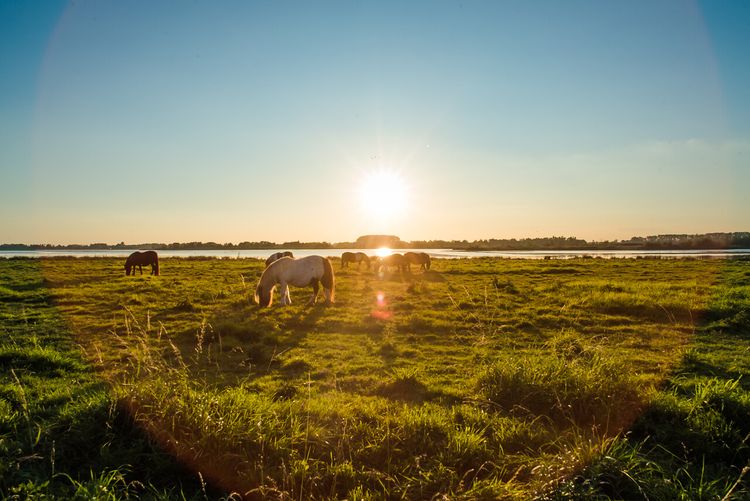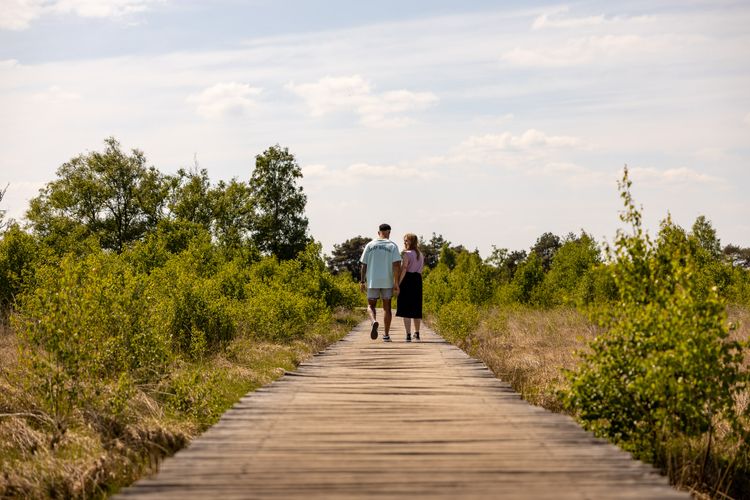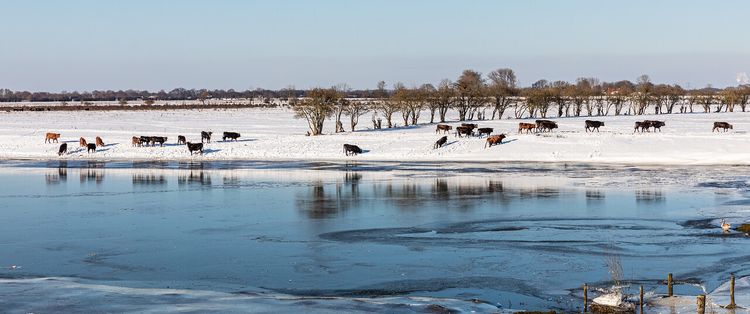Van Gogh NP walking tour Tilburg
Discover the area where the young Vincent took drawing lessons.
Starting point: from your location
Show all 6 photos
Discover the area where the young Vincent took drawing lessons
Welcome to Tilburg. It is here that the young Van Gogh received his first drawing lessons from master Huijsmans in 1866. When Van Gogh arrived in Tilburg at the age of thirteen, the population of the ‘city’ was around 18,500. The Tilburg-Breda railway line and station had been there for just three years, and the most common occupations were weaver and factory worker. In the immediate vicinity of Tilburg, is the stream landscape of the Leij and Voorste Stroom, as was the case back then, with its small fields and characteristic pollard willows. Take a walk out of the city and into the countryside and discover the cosy Piushaven, De Nieuwe Herdgang observation tower and Moerenburg-Koningshoeven Country Park.
The story of Vincent van Gogh in Tilburg
Tilburg is where Van Gogh took hi…
Discover the area where the young Vincent took drawing lessons
Welcome to Tilburg. It is here that the young Van Gogh received his first drawing lessons from master Huijsmans in 1866. When Van Gogh arrived in Tilburg at the age of thirteen, the population of the ‘city’ was around 18,500. The Tilburg-Breda railway line and station had been there for just three years, and the most common occupations were weaver and factory worker. In the immediate vicinity of Tilburg, is the stream landscape of the Leij and Voorste Stroom, as was the case back then, with its small fields and characteristic pollard willows. Take a walk out of the city and into the countryside and discover the cosy Piushaven, De Nieuwe Herdgang observation tower and Moerenburg-Koningshoeven Country Park.
The story of Vincent van Gogh in Tilburg
Tilburg is where Van Gogh took his very first drawing lessons at the age of thirteen. On 15 September 1866, the sparkling new Hogere Burger School Koning Willem II welcomed him as one of its most outstanding pupils, with excellent grades from his primary school in Zevenbergen under his belt. Vincent boarded with the Hannik family at Korvel 57, now Sint Annaplein 18-19. Here, a plaque and a special bench dedicated to Van Gogh recall Vincent’s time in Tilburg.
Vincent had a sense for languages and always did well. At the former palace of King Willem II, now the Palace Town Hall of Tilburg, he received drawing lessons from painter Constant Cornelis Huijsmans (1810-1886). Huijsmans paid considerable attention to drawing depth and was known as an excellent drawing teacher. Yet, in later years, Vincent never mentioned his drawing lessons. Despite an excellent report in his transition to his second year at school, Vincent was withdrawn and returned to his parents’ home in Zundert. No one knows why.
Vincent lived in Tilburg for around a year and a half. The Wilhelmina Canal hadn’t been dug at that time, and the landscape was dominated by streams, small fields and pollard willows, all of which were characteristic of his later work.
Between streams, pollard willows and heritag
We start the walk in the bustling Piushaven. The port only came into being after Vincent’s time here, in 1923, in light of the flourishing textile industry. Today, it is a recreational spot full of welcoming catering outlets and boating opportunities. At the time, this was the last part of the city.
From here, you can walk right out into the green countryside beyond. At the periphery of the Moerenburg-Koningshoeven Landscape Park is the Waterzuivering Moerenburg national monument (2). It was here, between 1937 and 2005, that wastewater from the textile industry was purified. It was once the first biological water treatment plant in the Netherlands and attracted considerable international attention.
We are now walking towards the location of one of Tilburg’s first stone houses, built in 1310: Huize Moerenburg. The remains of this once waterlogged farmhouse, and later rectory, were recovered during excavation works back in 2005. Since 2012, the steel contours of the building have resurrected its location from centuries ago.
We’ll continue walking, past the pollard willows that are so typical of this wet stream landscape. They were a frequent subject of Vincent’s drawings. For him, the willows were like people.
‘Sometimes I long so much to do landscape, just as one would for a long walk to refresh oneself, and in all of nature, in trees for instance, I see expression and a soul, as it were. A row of pollard willows sometimes resembles a procession of orphan men.’ (Vincent in a letter to his brother Theo, The Hague, 10 December 1882).
The beautiful scene conceals the fact that Korvelse Waterloop was once infamous – the narrow, unpaved path along the watercourse with greenery adorning either side creates a very special landscape image. Yet, these ‘blue trenches’ were once used to drain away untreated factory water, creating a major odour nuisance. The water treatment plant helped to resolve that problem.
Along a narrow path surrounded by trees and undergrowth, we emerge into a typical 19th-century Brabant landscape of streams, fields and fens. Walking parallel to De Voorste Stroom, we move towards Café Mie Pieters. In Vincent’s time, this historic café served fish dishes for just 15 or 30 cents. People would fish for eel, pike, roach and tench in the surrounding fens with beanpoles.
Along the route, we see the Schaapsven, where sheep were once washed before being sheared. This made the water rich in nutrients, which could explain the large number of water lilies that still thrive here. The path wends its way past the banks of the Galgeven, which at sixteen hectares is one of the largest fens in the Oisterwijk forests. In the early 19th century, this fen came to be owned by Tilburg textile producers, who used it for washing wool. On the surrounding hills there once stood gallows and a fulling mill, a wind-driven industrial mill used to ‘full’ or after-process wool.
We’ll now pass the Rendierhoeve, an erstwhile neo-Gothic monastery from 1903, with its striking antlers above the entrance. French Trappist monks lived here more than a century ago.
Before we head back towards Piushaven, we’ll stop by Our Lady of Koningshoeven Abbey. Since 1881, this historic location has evolved from a simple sheep pen to a Trappist monastery and iconic brewery. It’s here that the monks brew the popular ‘La Trappe’ speciality beer. Tip: take a tour of the brewery and visit the monastery shop or the tasting room.
A little farther ahead is De Nieuwe Herdgang observation tower, which towers high above Moerenburg-Koningshoeven Landscape Park. This 25-metre-high architectural structure shows how here, nature is intertwined with the city. The observation tower is open between 08:00 and 17:00 in winter and between 08:00 and 20:30 in summer. Admission costs €1.50 and cards are accepted. It is well worth the short detour.
Want to know more about Vincent’s time in Tilburg? Visit www.vangoghbrabant.com/tilburg. Here, you’ll find an interesting walk through the Korvel and the city centre.
Sustainability Valley
Volunteers from the Sustainability Valley (Duurzaamheidsvallei) Foundation are currently working hard to improve the sustainability of the area between Moerenburg (Tilburg) and Durendael (Oisterwijk) along the Voorste Stroom. They are helping to promote natural development, enhance the flora and fauna and stimulate sustainable energy. The Foundation is also laying footpaths. You will encounter a number of guides and information panels along the route, sharing stories about the nature and culture of the area.
Van Gogh National Park
The Van Gogh walking tours in the Van Gogh National Park immerse you in the landscape Vincent van Gogh fell in love with. Enjoy the meandering streams, extensive nature reserves, farmland, country estates and greenery that stretches out right into the heart of the villages and towns. The locals are working together to preserve and expand this beautiful, healthy and green living environment. With Vincent van Gogh as their guide.
Finding the way with numbered junctions
This Van Gogh NP walking tour has been mapped out using the local numbered junction system. You can recognise the route by the signs with the words 'Van Gogh National Park', which you will find on every junction post.Between the junctions you can follow the junction system signposts.
Routes reporting point
If you find something wrong with the signage or the route itself, you can report it via the Brabant junction route reporting point. You can also call 0800 4050050 free of charge.
-
Signposting Van Gogh routes Brabant
Follow the signs with 'Van Gogh National Park'. These are placed underneath the regular junction signs.

Signposting Van Gogh routes Brabant
Follow the signs with 'Van Gogh National Park'. These are placed underneath the regular junction signs.
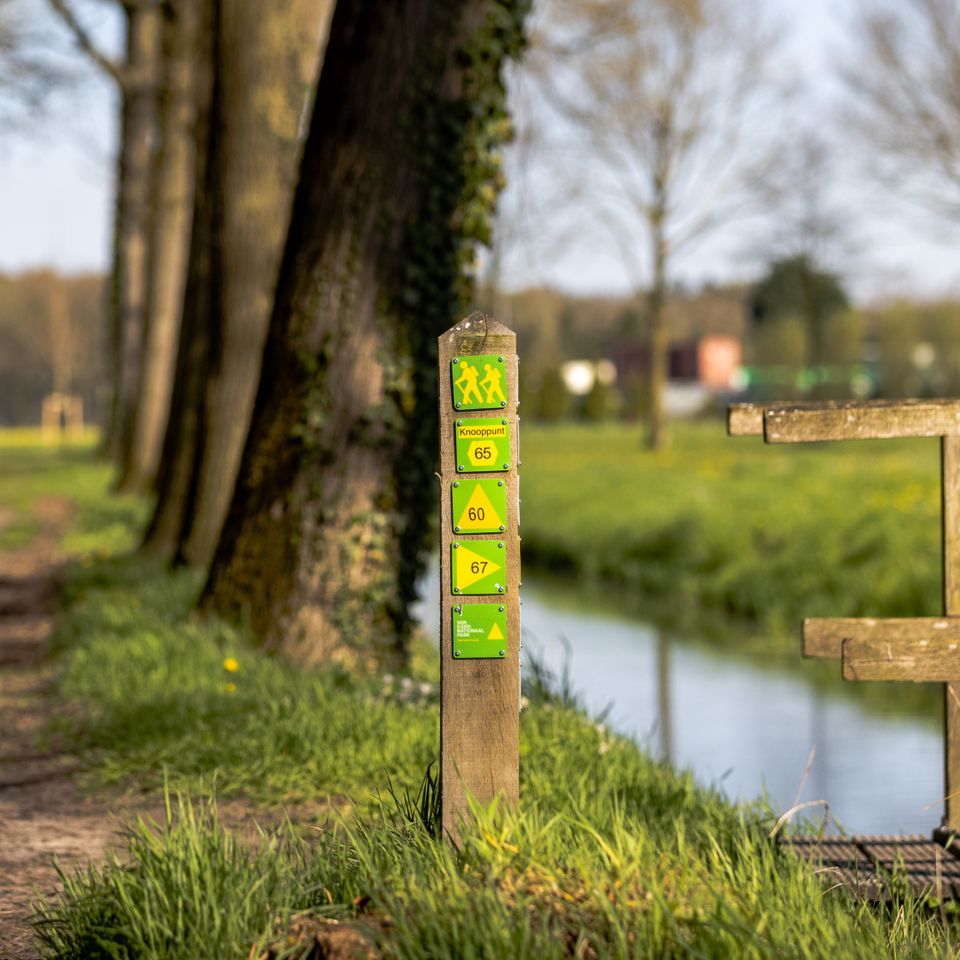
-
Hotline routes
Hotline routesIf there is something wrong on the route, report it here.
Sights on this route
Piushaven (Pius Harbour)
The Piushaven is a great base: within walking distance of the centre of Tilburg, but also surrounded by greenery. The quays, the water, and the pier in Piushaven are a 'live stage' for all sorts of events and activities.
Starting point:
Piushaven5017 AN Tilburg
Navigate to starting point
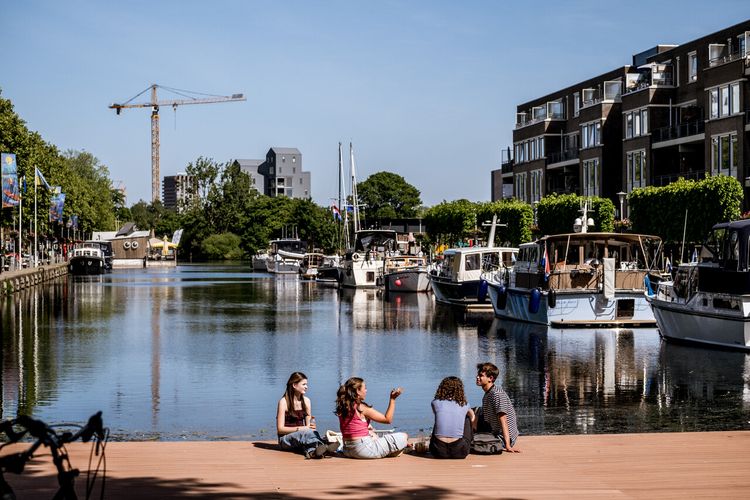
National Monument Water Treatment Moerenburg
Once the first biological water treatment plant in the Netherlands with much international attention.
Starting point:
Hoevense KanaaldijkTilburg
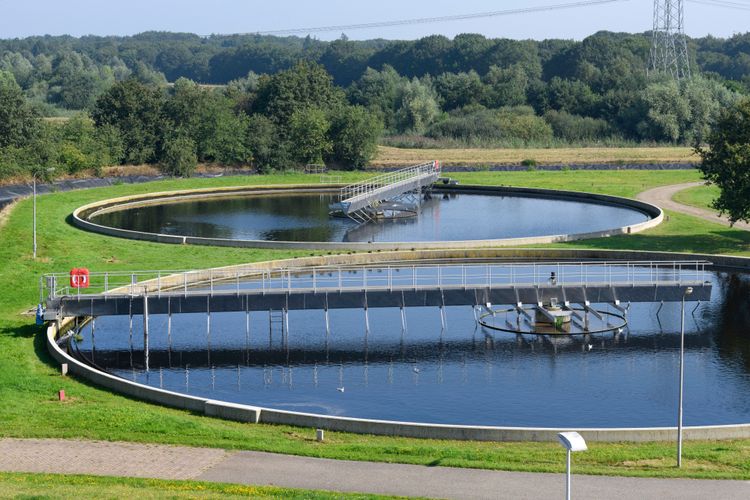
National Monument Water Treatment Moerenburg
National Monument Water Treatment Moerenburg
Hoevense Kanaaldijk
Tilburg
Villa Moerenburg
Villa Moerenburg, built around 1310, was one of the first stone houses in Tilburg. It was sold to the Tongerlo abbey at the end of the 14th century and served as a rectory.
Starting point:
Moerenburgseweg 15018 TC Tilburg
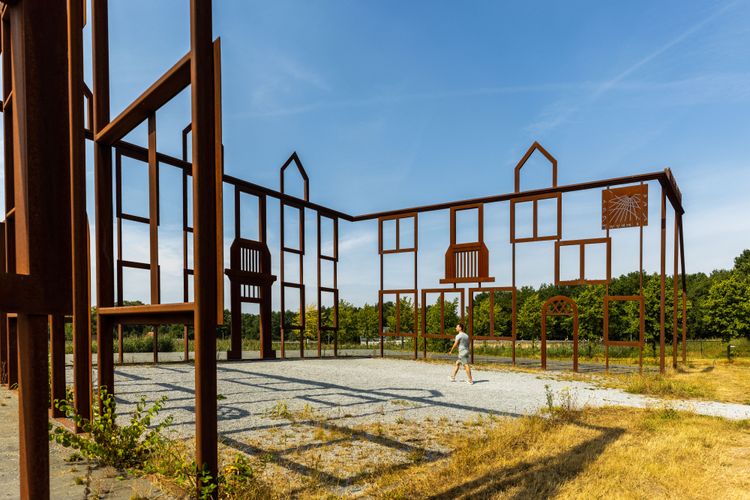
Korvelse Waterloop
This narrow unpaved path along the watercourse, with greenery on both sides, creates a remarkable landscape image.
Starting point:
Korvelse WaterloopTilburg
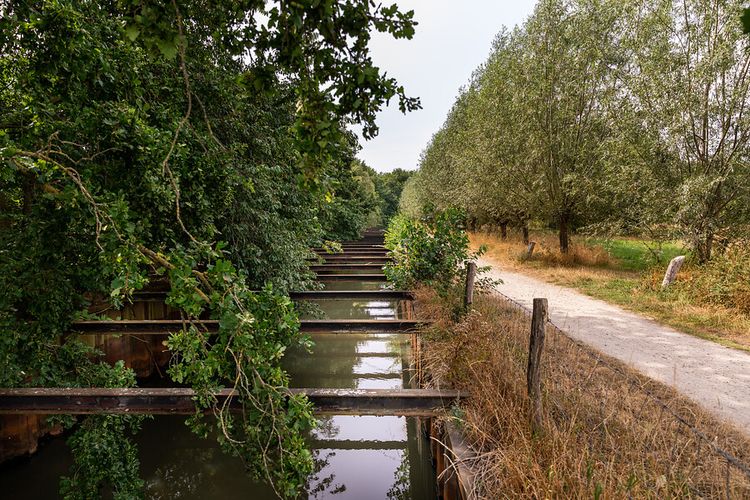
Café Mie Pieters
In this historic lunch café, in Vincent van Gogh’s time, one could get a fish meal for 15 or 30 cents.
Starting point:
Café Mie PietersLaag Heukelomseweg 13
5059 AN Heukelom
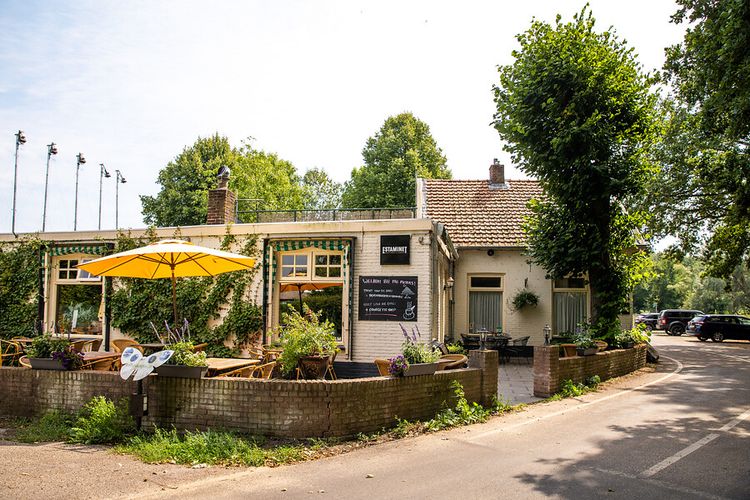
Galgeven
At 16 hectares, this is one of the largest fens in the Oisterwijk forests.
Starting point:
GalgevenOisterwijk
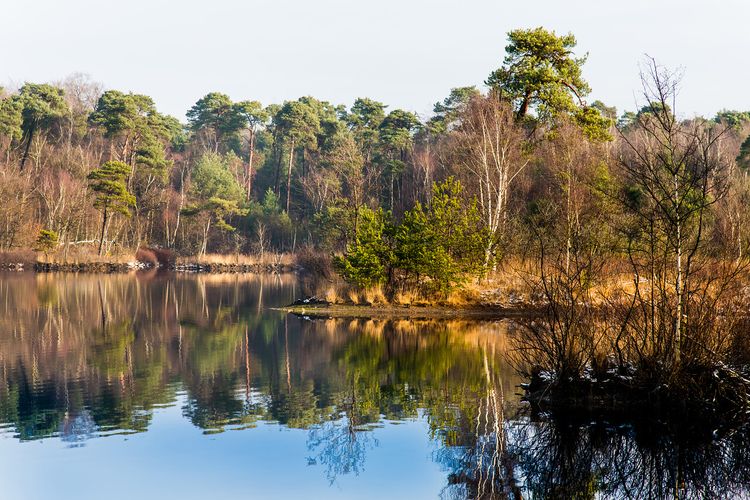
De Rendierhoeve
This former convent was occupied in 1903 by French Trappist nuns. They named the house Notre Dame du Perpetual Secours (Our Lady of Perpetual Help).
Starting point:
Eindhovenseweg 65056 RP Berkel-Enschot

Koningshoeven Abbey
All of the La Trappe beers have been created and are brewed here, together with the Trappists of Our Lady of Koningshoeven Abbey.
Starting point:
Eindhovenseweg 35056 RP Berkel-Enschot
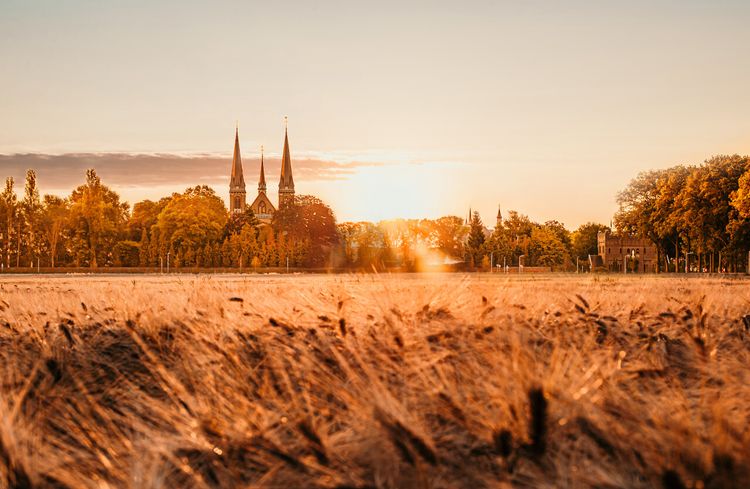
Observation Tower De Nieuwe Herdgang
This architectural structure, 25 metres high, shows how nature here is intertwined with the city.
Starting point:
EindhovensewegTilburg

Boarding House
Vincent boarded with Jan and Adriana Hannik at Korvel 57, nowadays Sint Annaplein 18-19.
Starting point:
Sint Annaplein 185038 TV Tilburg
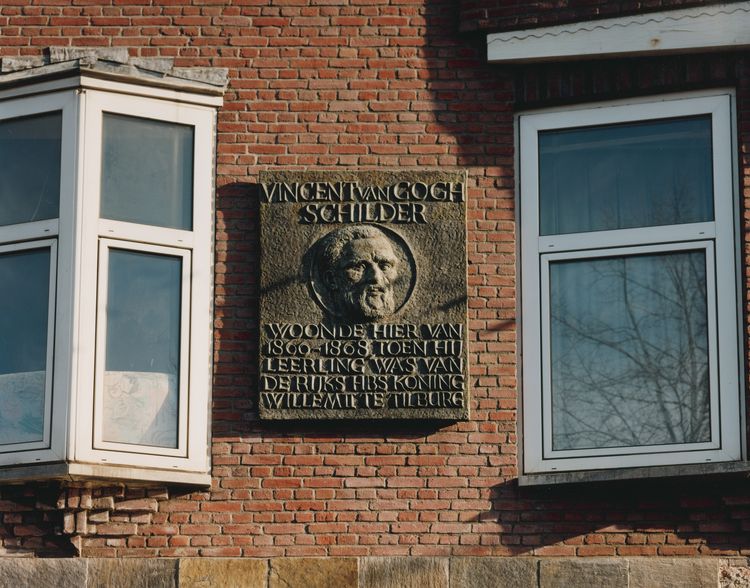
Stadspaleis Willem II | HBS
Willem II’s City Palace | High School In 1886 the HBS (Hogere Burger School or Higher Civic School) moved into Willem II’s former city palace.
Starting point:
Stadhuisplein 1285038 TC Tilburg
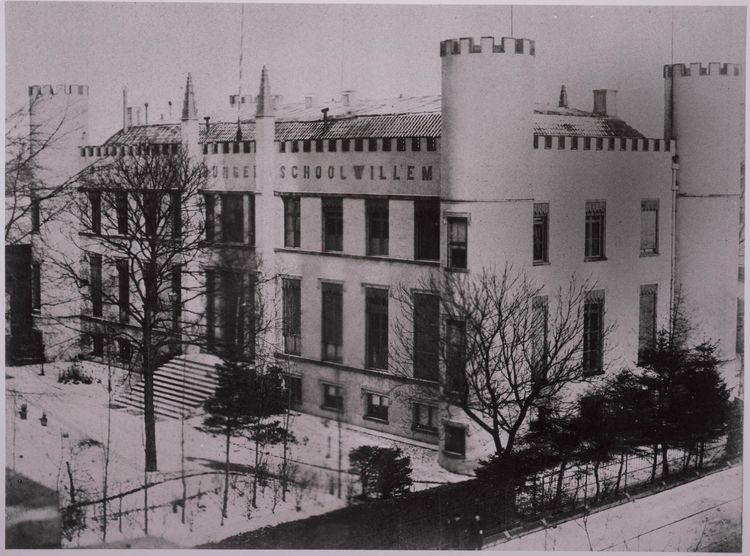
Piushaven (Pius Harbour)
The Piushaven is a great base: within walking distance of the centre of Tilburg, but also surrounded by greenery. The quays, the water, and the pier in Piushaven are a 'live stage' for all sorts of events and activities.
Starting point:
Piushaven5017 AN Tilburg
Navigate to endpoint

- 61
- 01
- 89
- 86
- 86
- 99
- 87
- 97
- 63
- 64
- 62
- 58
- 57
- 88
- 98
- 12
- 11
- 95
- 94
- 93
- 24
- 21
- 20
- 30
- 70
- 84
- 90
- 64
- 61

